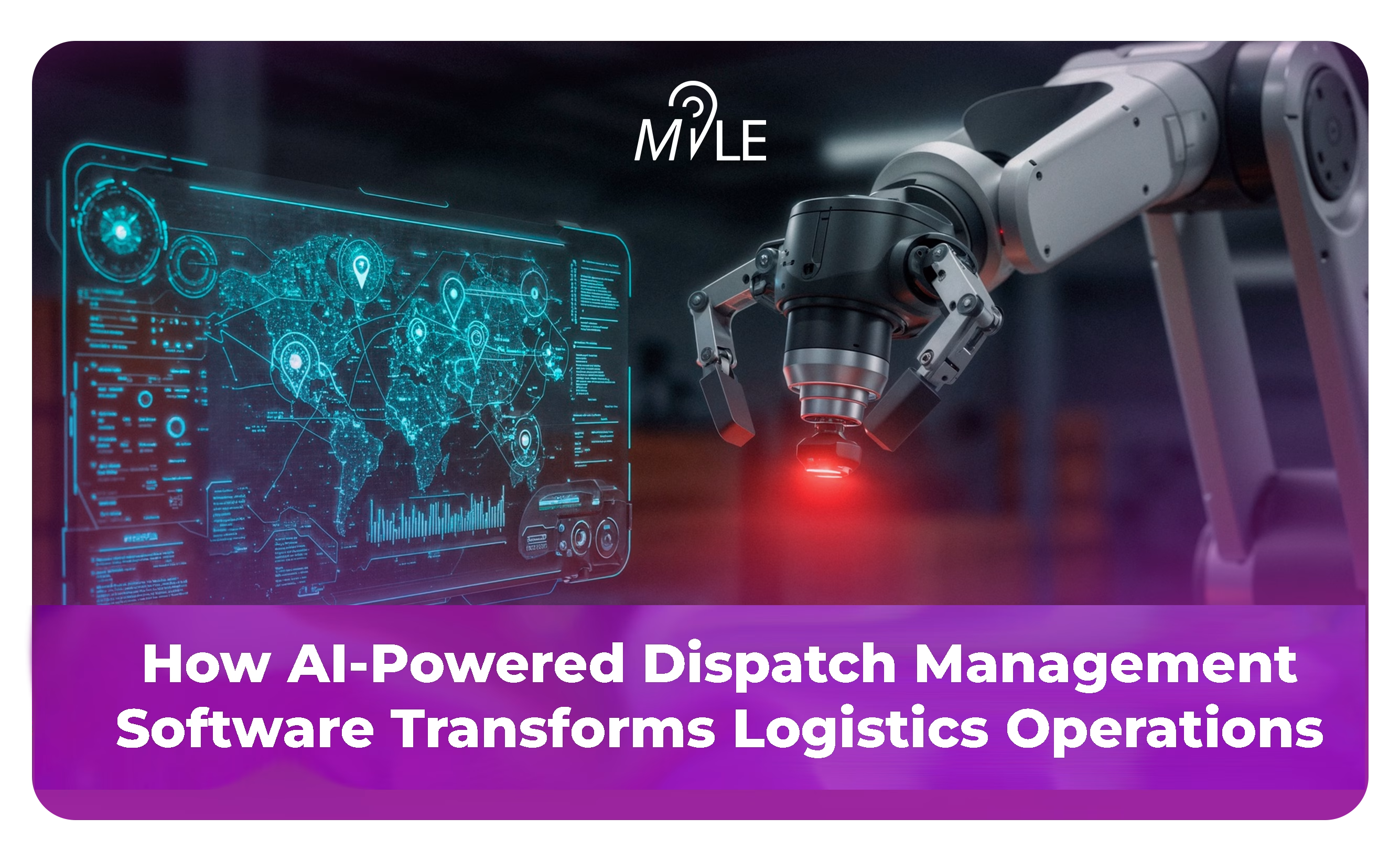How Delivery Scheduling Software Supports Delivery and Fulfilment Businesses
Today’s customers expect fast, accurate, and flexible deliveries, regardless of whether they’re ordering groceries, furniture, or fashion. To keep up, businesses need more than just a reliable fleet. They need systems that bring clarity, control, and coordination to every delivery run. That’s where delivery scheduling comes in.
By automating when and how deliveries happen, businesses can reduce errors, lower costs, and improve customer satisfaction. And as delivery volumes increase, having the right scheduling framework becomes essential for sustainable growth.
Before we explore the best solutions on the market, let’s discuss what delivery scheduling really means and how it differs from delivery planning.
What Is Delivery Scheduling?
Delivery scheduling is the process of assigning specific delivery time windows to individual orders, based on customer preferences, driver availability, route feasibility, and vehicle capacity. It answers the question: When will each order be delivered, and who will deliver it?
A good delivery scheduling system considers multiple moving parts: warehouse readiness, available drivers, traffic conditions, and promised delivery windows. The goal is to organize deliveries in a way that balances business efficiency with customer satisfaction.
In simple terms, delivery scheduling helps businesses make promises they can actually keep. It’s the link between order fulfillment and the moment a package arrives at the customer’s door.
Delivery Scheduling vs. Delivery Planning
Although often used interchangeably, delivery scheduling and delivery planning serve different (but connected) purposes in the logistics process.
- Delivery Planning involves figuring out how deliveries will be made. It includes route optimization, driver assignment, vehicle selection, and capacity checks. It’s more strategic and answers questions like: What’s the most efficient way to deliver these 50 orders today?
- Delivery Scheduling, on the other hand, focuses on when each delivery should happen. It matches orders to available time slots, aligns with customer preferences, and adjusts based on driver shifts or delivery zones. It’s about timing and coordination.
Mile’s Delivery Scheduling Software Is Designed for Efficiency, Accuracy, and Customer Delight
As more customers turn to online shopping for everything from everyday groceries to oversized furniture, businesses must streamline their delivery operations to meet rising expectations. At the heart of this transformation is intelligent scheduling and delivery route planning.
A robust delivery management system helps businesses stay ahead by optimizing how, when, and where packages are delivered. Instead of relying on outdated methods, modern delivery scheduling software for small business owners brings automation, precision, and visibility into every step of the delivery process.
For businesses looking to grow sustainably, meet SLAs (service level agreements), and retain customer trust, choosing the right software for managing dispatch schedule, routes, and delivery timing is key. Mile’s delivery scheduling software offers powerful capabilities that help businesses of all sizes—from emerging startups to high-volume delivery networks—simplify complex delivery logistics and drive performance.
Key Features of Mile’s Delivery Scheduling Software
Mile has built a delivery scheduling software platform that brings together automation, real-time data, and customer-centric features. Here’s how Mile is helping businesses take control of their delivery operations.
Real-Time Route Optimization
Time and distance matter when your business depends on prompt deliveries. Mile’s real-time route optimization feature helps drivers choose the fastest and most efficient paths by using current traffic data and historical trends. When new orders are placed or delivery conditions change, the system automatically recalculates the most efficient routes and thus, avoids any disruption in a delivery cycle.
This is helpful for businesses that depend on multi-stop route planning to complete several deliveries in a single day, because it helps them reduce idle time, lower fuel consumption, and complete more deliveries within the same timeframe. It’s particularly valuable for grocery delivery services that need to meet tight delivery windows and maintain freshness across several destinations.
Real-Time Tracking and Updates
Transparency is a major driver of customer loyalty. Mile’s real-time tracking enables dispatchers and managers to view the exact location of drivers and packages at any moment. This level of visibility allows teams to send accurate ETAs and notify customers through Mile’s customer portal or integrations with platforms like WhatsApp.
Moreover, Mile accommodates both fixed route dispatch and delivery scheduling and also handles dynamic delivery setups with ease. This flexibility allows businesses to maintain control, reduce uncertainty, and keep daily operations running smoothly across different delivery models.
Digital Load-Out Management
Gone are the days of manual checklists and warehouse miscommunication. Mile’s digital load-out feature ensures that every item is accounted for before it leaves the warehouse. It checks product SKUs and quantities against the manifest, minimizing loading errors and preventing delivery mishaps.
By digitizing the loading process, Mile helps businesses avoid costly returns, improve inventory accuracy, and maintain trust with customers.
Electronic Proof of Delivery (ePOD)
Delivery confirmation is made simple and reliable with Mile’s electronic proof of delivery feature. Drivers can capture digital signatures, time-stamped photos, and customer confirmation details right from their mobile device. This makes sure packages are delivered to the correct recipients every time, even in high-volume or high-value scenarios.
This feature is particularly useful for businesses with recurring deliveries or subscription-based models, as it creates a reliable digital trail of completed transactions.
Intelligent Time Slot Selection
When it comes to delivering large items like furniture or time-sensitive goods like fresh produce, traditional scheduling tools fall short. Mile’s delivery scheduling software is built to handle these unique demands with precision and scalability.
Customers can choose from multiple delivery time slots based on availability, location, and environmental preferences. The platform uses intelligent algorithms to align customer preferences with route efficiency and truck capacity. Thus, on one hand, customers have the flexibility to pick time slots that work best for them, while, on the other, eCommerce stores are able to manage work schedules without overcommitting resources.
Capacity-Based Scheduling
Every delivery vehicle has its limits. Mile’s scheduling software considers vehicle dimensions, cargo weight, and available driver shifts to optimize capacity. This prevents under- or over-utilization and brings maximum value to each delivery run. The system assigns orders based on realistic loading capabilities, thereby reducing the risk of missed deliveries or last-minute reshuffling.
Mile’s scheduling software also supports better dispatch decisions during busy periods by using real-time data. The system calculates how many deliveries each vehicle can handle based on size, weight, and timing constraints, then automatically matches orders to the most suitable routes. If demand spikes, dispatchers can view capacity levels across the fleet and reassign orders quickly without disrupting the entire schedule. This helps teams manage volume more predictably, even during high-traffic hours or peak seasons.
Balanced load distribution at all times helps improve fuel usage, maximize available space, and maintain high-standard delivery performance.
Why Businesses Choose Mile Over Other Solutions
Businesses in retail, grocery, furniture, and eCommerce industries use Mile to optimize their fulfillment workflows. Beyond the primary benefit of real-time visibility, Mile’s platform actively improves delivery speed, accuracy, and customer experience, and helps keep operational costs under control.
Here’s how Mile’s solution stands out:
- Eco-Friendly Slot Selection: Encourage customers to pick delivery slots that minimize carbon emissions by aligning with existing delivery routes.
- Automated Dispatching: Assign drivers to routes automatically using smart allocation logic that accounts for order volume, delivery area, and driver availability.
- High-Volume Scalability: Handle thousands of deliveries per day without slowdown. The system scales up without manual intervention.
- Smart Labor Planning: Use predictive tools to forecast how many drivers and vehicles are needed daily, avoiding both understaffing and unnecessary overhead.
- Sustainability Integration: Lower fuel consumption and emissions through optimized delivery route planning and real-time traffic analysis.
Final Thoughts
Mile’s delivery scheduling software is a powerful ally for delivery and fulfillment businesses that want to optimize their operations and deliver superior customer experiences. From multi stop route planning to real-time tracking, this all-in-one platform takes the stress out of dispatch schedules and delivery management.
Small businesses gain agility. Large operations get scalable control. And everyone benefits from smarter, faster, and greener deliveries.
Ready to make your delivery system smarter and more efficient? Contact Mile today and start transforming your operations with intelligent scheduling software tailored to your business needs.

